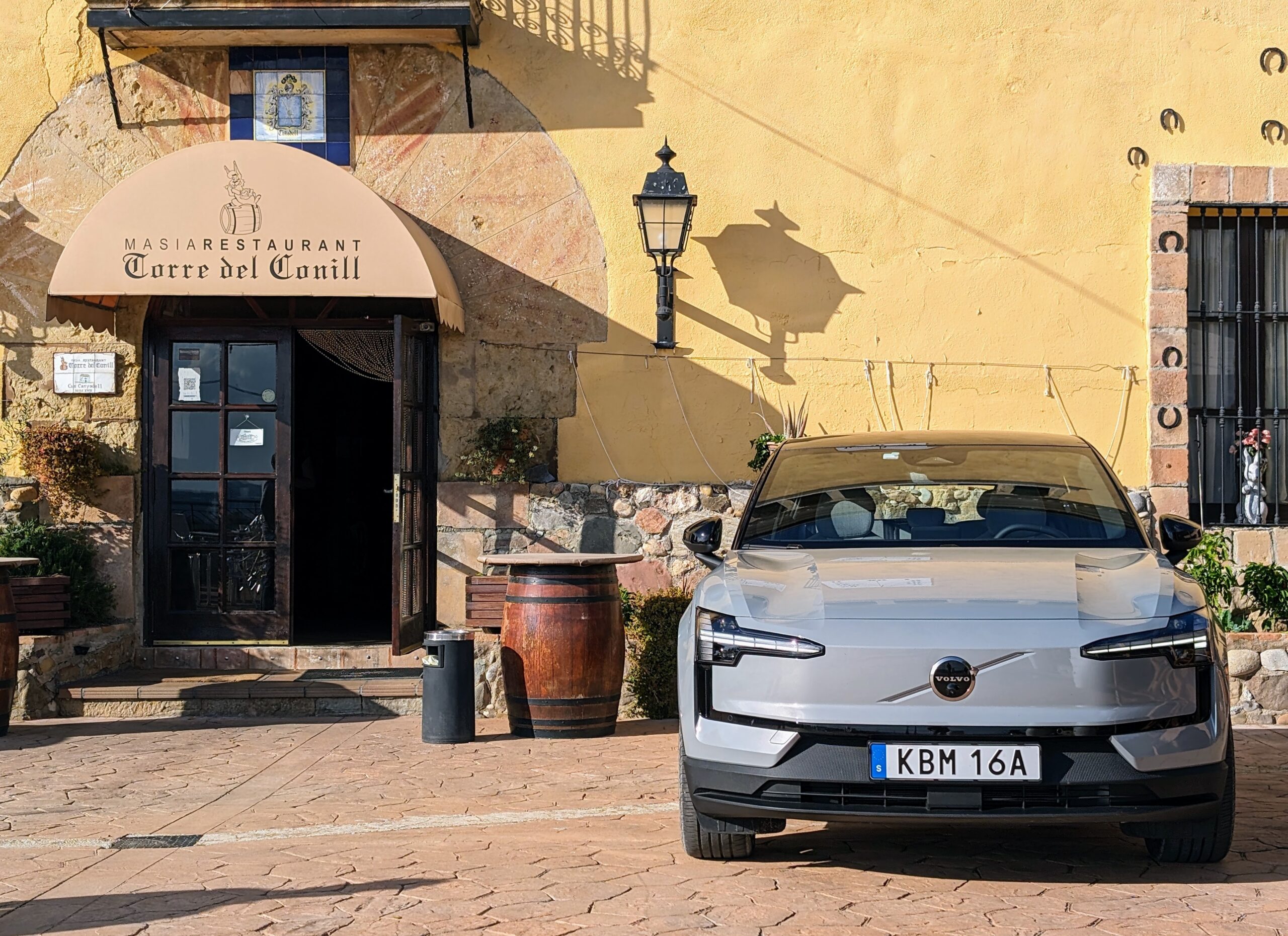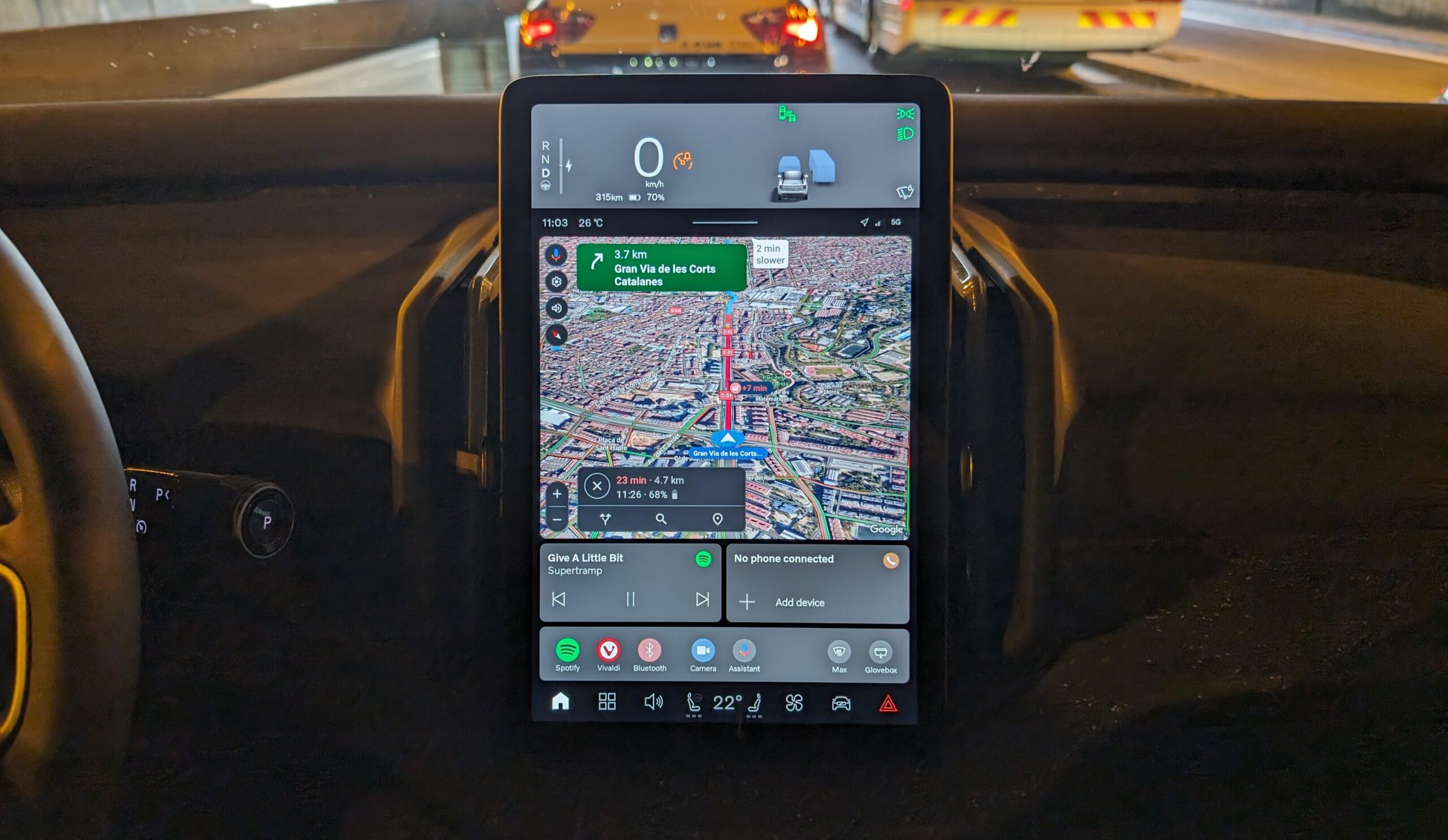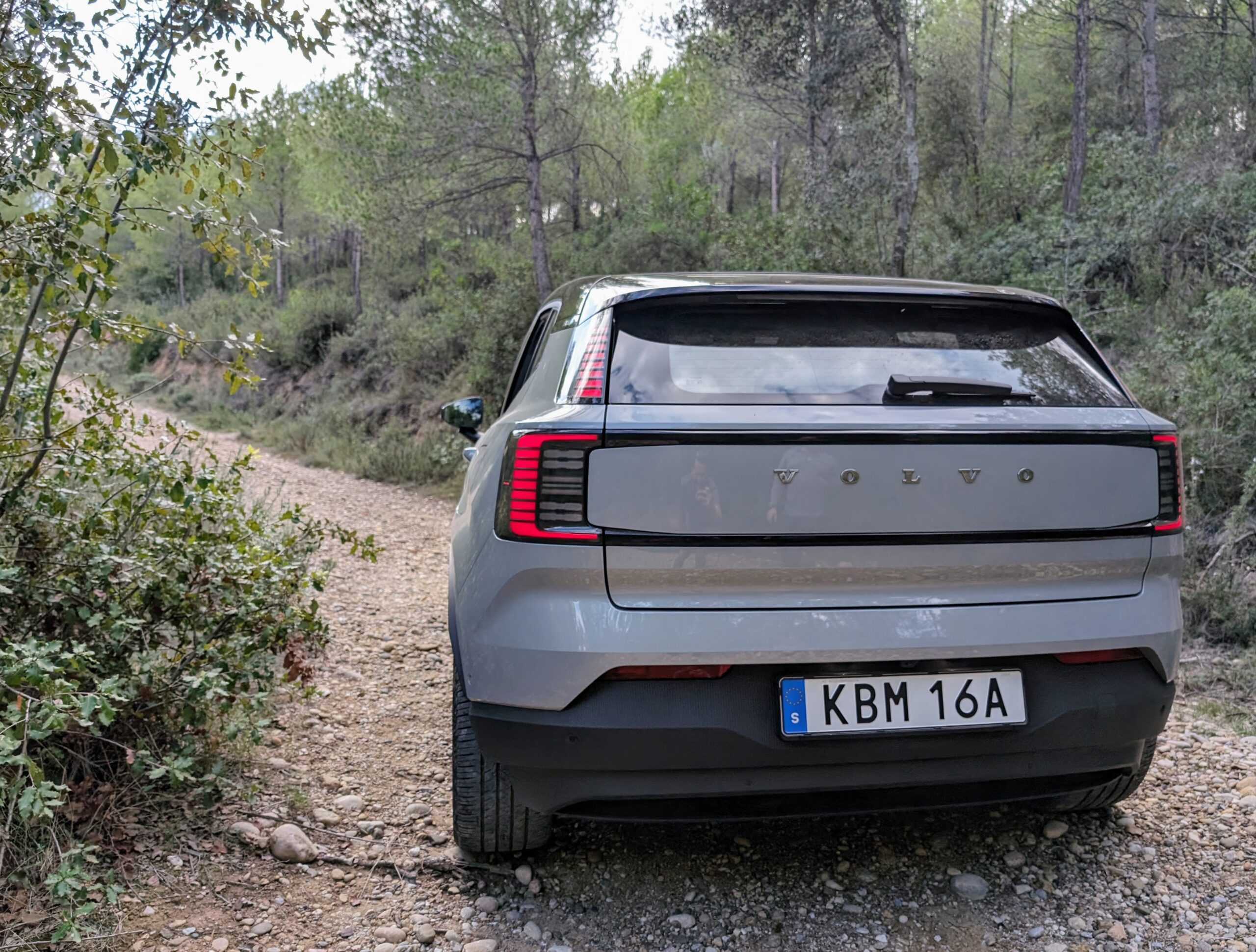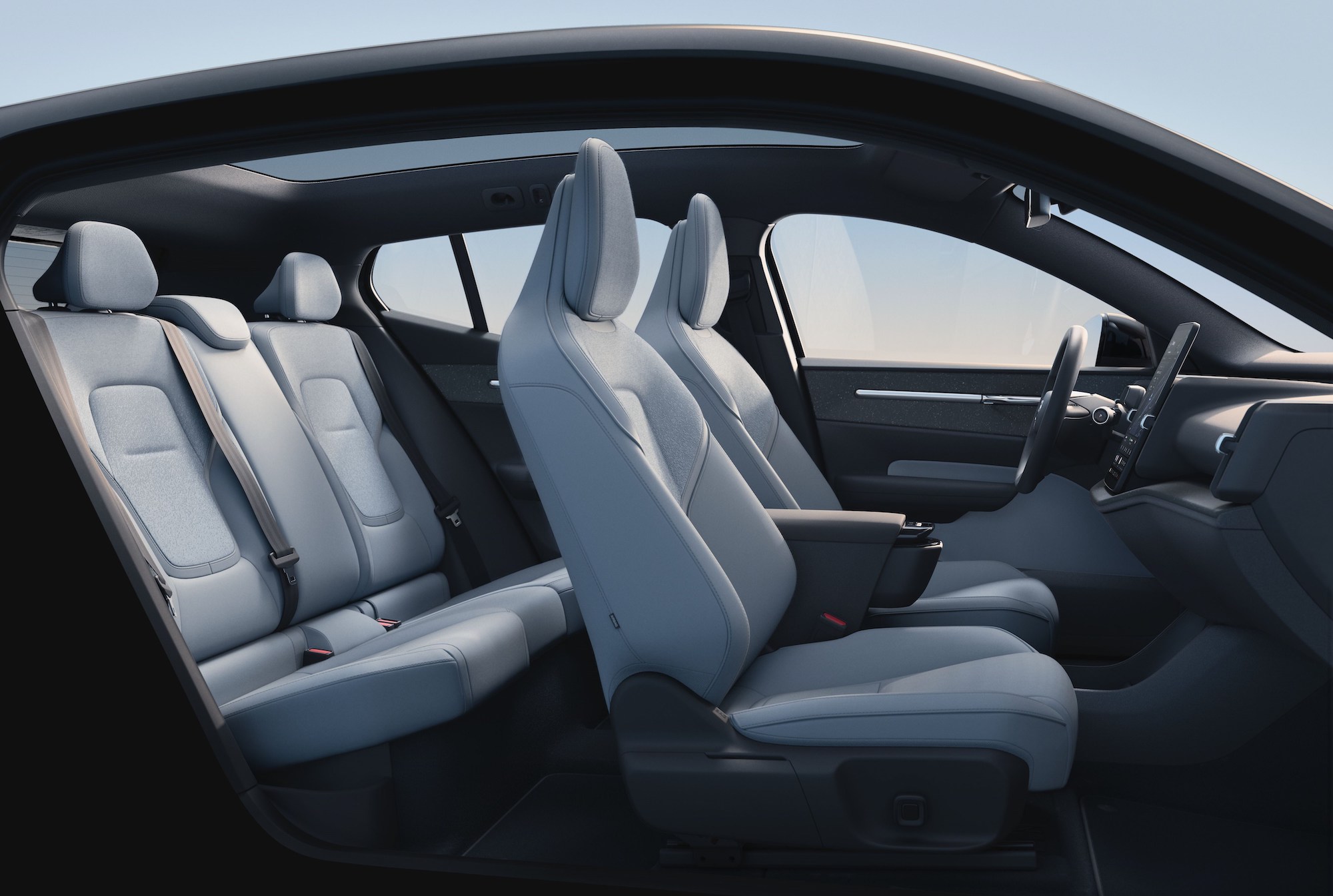Sign up for daily news updates from CleanTechnica on email. Or follow us on Google News!
The Volvo EX30 takes Volvo’s legacy of building some of the safest cars in the world, electrifies it, and wraps it all up in Volvo’s smallest SUV package ever. At the same time, the EX30 is the fastest SUV Volvo has ever built with a staggering 0 to 60 time of 3.4 seconds in the dual motor performance build.
The first vehicles off the production lines are set to arrive to the first customers in China and Europe by the end of this year, with US customers slated to take delivery in the first half of 2024. Unsurprisingly, the prospect of a compact, affordable electric Volvo has customers around the world frothing at the mouth.
Digital demand for the EX30 has been so strong that Volvo announced plans to ramp up a second production facility for the EX30 before the first deliveries are even out the door. Production of the EX30 at Volvo’s Ghent, Belgium, factory will come online in 2025, complementing production from its factory in Zhangjiakou, China.

A bank of all-wheel drive and rear-wheel drive EX30s greeted us for a full day of driving. Image credit: Kyle Field, CleanTechnica
CleanTechnica was invited to the first global drive event for the Volvo EX30 and we were eager to see if the vehicle lived up to the impressive set of specs we’ve been drooling over for months. A fully electric compact SUV starting at $34,950 with Volvo’s safety, tech, and luxury behind it sounded too good to be true, but maybe that’s just one of the benefits of the electric vehicle revolution. We needed to see for ourselves.
Driving Experience
For our first drive session, we landed a rear-wheel drive single motor EX30. These beauties were kitted out with Volvo’s mellow Vapour Grey color that felt sophisticated yet relaxed. After a few minutes to get out of the city and onto the highway, we let it rip and the power it possessed was immediately apparent. Volvo didn’t tune this thing to be a mellow grocery getter. It was ready to rip right out of the gate — and this was just the single motor build!
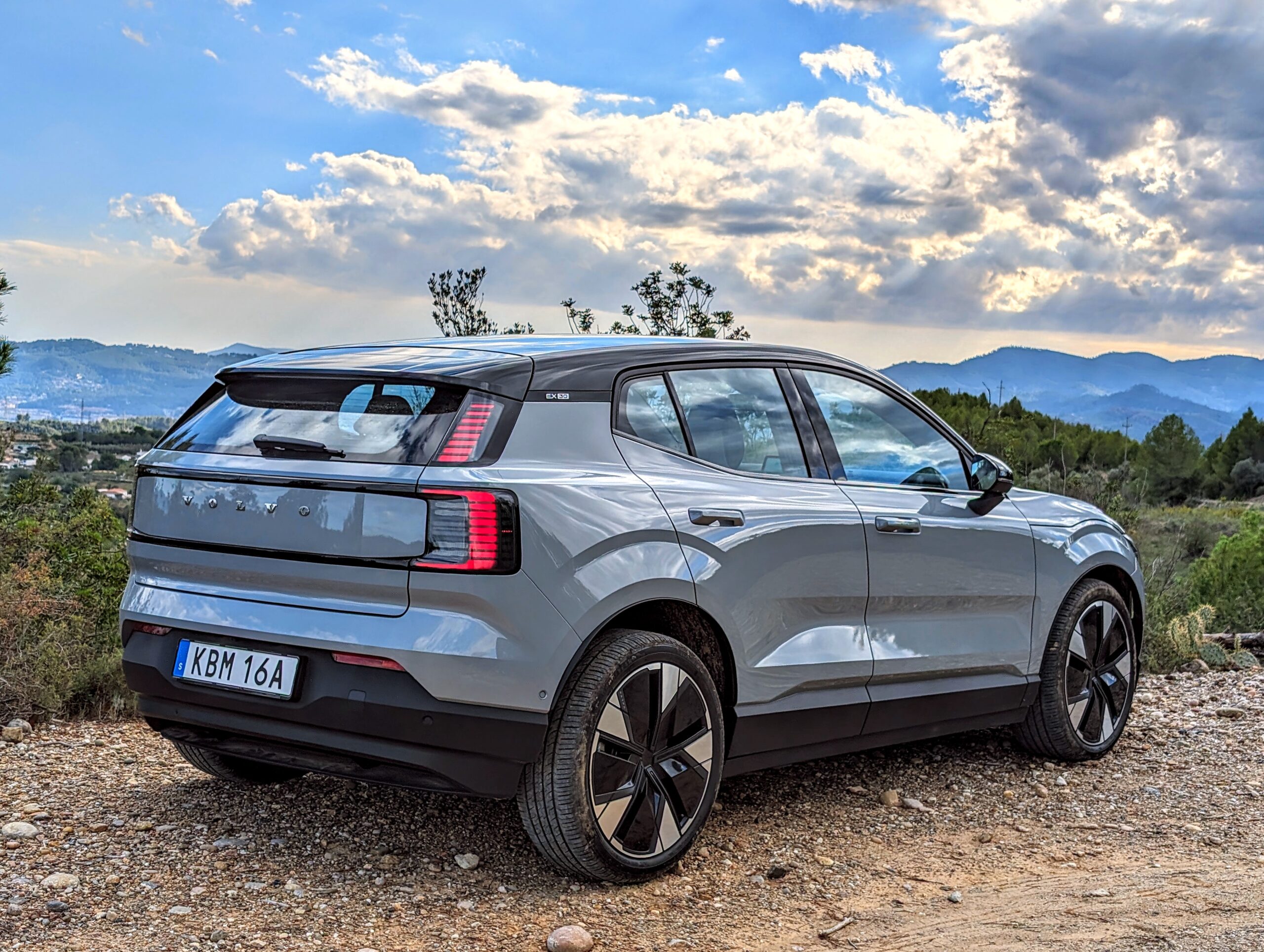
The single-motor Volvo EX30 exceeded our expectations on and off road. Image credit: Kyle Field, CleanTechnica
With the steering set to firm and two hands on the wheel, we pounded the accelerator and the EX30 absolutely bolted off the line. It had far more power and a more aggressive tune to the motor than expected from a rear-wheel drive Volvo. If this was the affordable “base” model of the EX30, what was the dual motor performance build capable of? With the EX30, Volvo was able to deliver impressive performance along with its world class safety tech.
Taking the EX30 through the canyons leading out of the Barcelona metro area, the tight suspension let us hold a tight line, ripping through the curves while the skateboard chassis and heavy battery held the vehicle pinned to the ground.

The Volvo EX30 plants its battery in the center of the skateboard style chassis. Image credit: Kyle Field, CleanTechnica
The rear-wheel drive EX30 with its 268 horsepower and 253 ft-lb of torque was far more than we were expecting right out of the gate and provided a nice sharp linear acceleration curve. It seemed to have the same amount of punch whether we were starting from a stop or accelerating from 65 miles an hour looking to pass someone on the highway.
The all-wheel drive build of the EX30 took this to the next level. The addition of a front motor boosted the power up to 422 horsepower and 400 ft-lb of torque — impressive figures that feel even higher in such a small car. The extra weight of the additional motor was noticeable in turns, but was more than offset with the extra power.
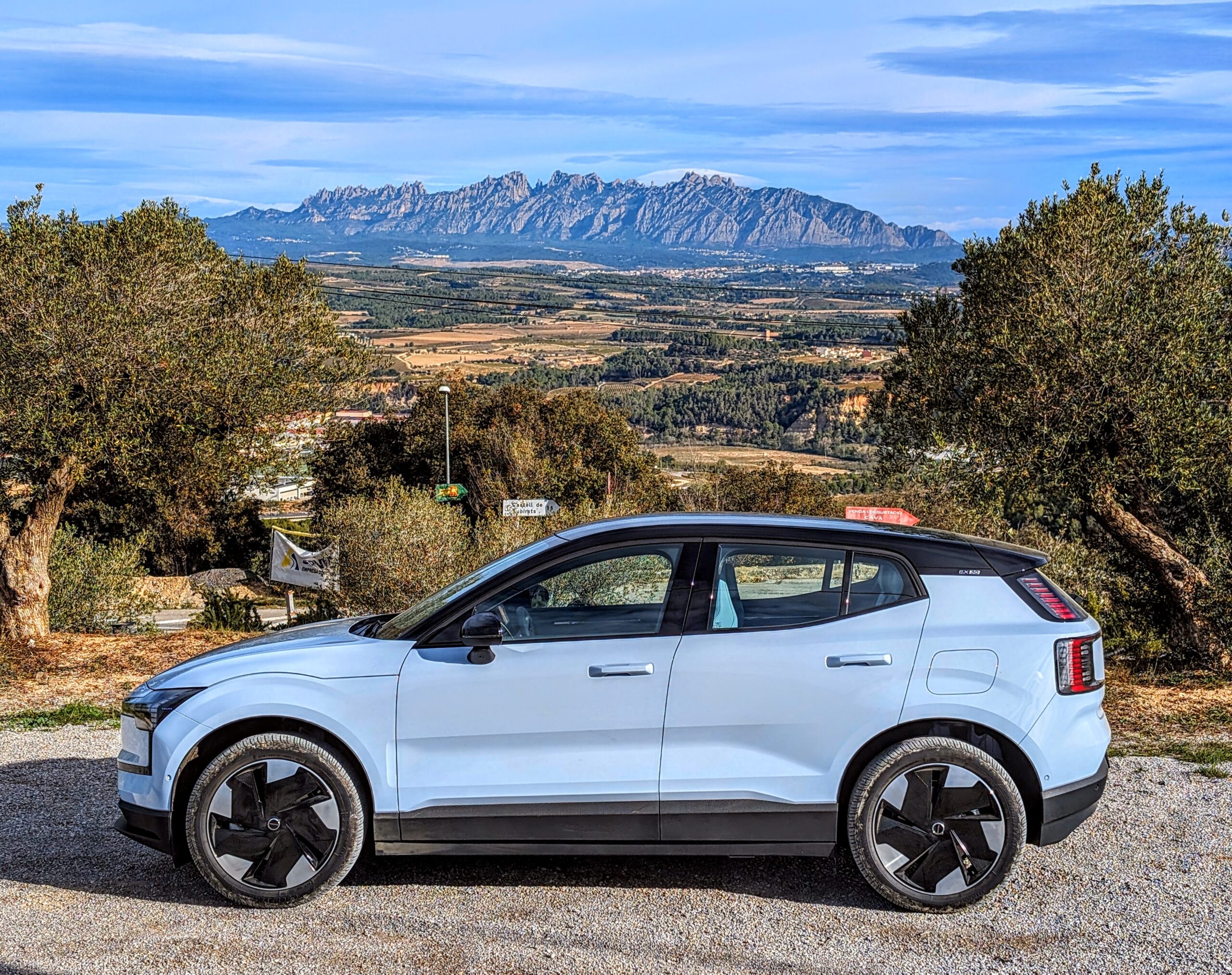
The all-wheel drive EX30 provided a spirited driving experience both on road and off. Image credit: Kyle Field, CleanTechnica
The extra power in the dual-motor build translates to more power in all scenarios, though it’s clearly not tuned to be a performance vehicle. It would actually be interesting to see Volvo pushing the performance limits of the EX30 because it’s already so good in both of its configurations, but we’ll have to wait on that. This build does have more capability off-road and in adverse conditions, but we found the single motor to be surprisingly capable on its own.
For those living in the pacific northwest and similar areas where AWD Subarus dominate, the AWD EX30 is a great option, especially if you’re looking for a zero emission option.
Suspension & Handling
With all that power being applied to the wheels, you’d expect the Volvo EX30 be ripping tires apart, breaking traction at every opportunity, but that just wasn’t the case. Along the test drive, we abused the car both on straightaways and around the tight mountain curves of the Barcelona coastline. On-road and off into the rocky dirt roads weaving through Spain’s wine country. No matter how tight the turn, how much we stomped on the accelerator or pounded on the brakes to scrub speed, we weren’t able to break traction in normal driving.
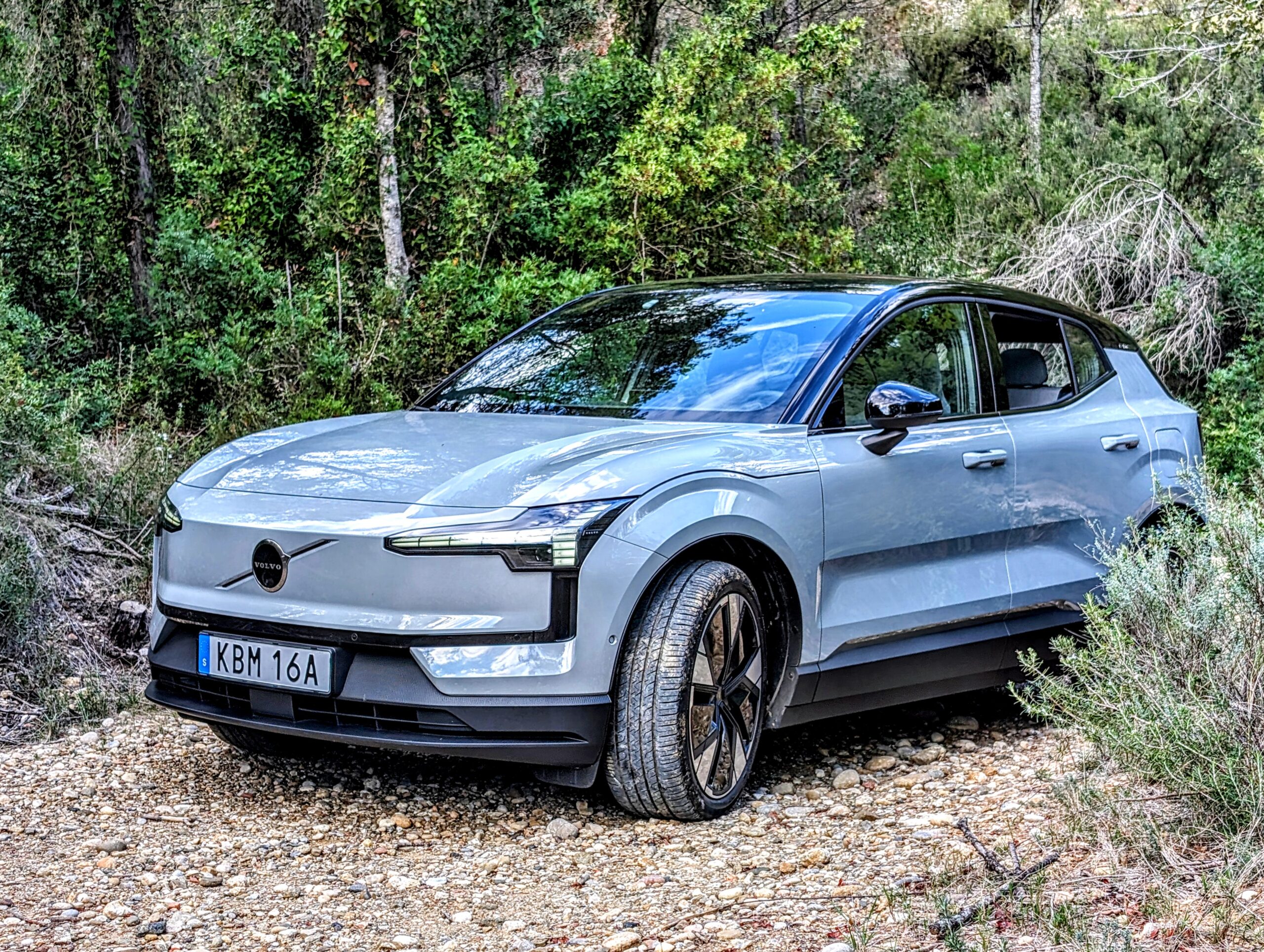
Even the rear-wheel drive EX30 wanted to get out and play in the dirt. Image credit: Kyle Field, CleanTechnica
Based on that, we assumed the vehicle had some masterful implementation of digital torque vectoring that leveraged the responsiveness of its electric drivetrain along with millisecond-level computations to maximize traction. We were wrong.
After a long day of driving, I talked to Egbert Bakker, Volvo’s head of vehicle dynamics, who smiled and shared that the EX30 didn’t have a torque vectoring system. There is zero front-to-back throttling of power from the front to rear motor or side-to-side with any electronic differential technologies. Instead, Volvo does as it has always done, using the brakes at each corner of the vehicle to effectively adjust the amount of power being applied if traction comes into question.
This rather standard digital traction control system is complemented by a modern multi-link suspension system. At the rear of the vehicle, the EX30 features a 5-link suspension system with four links being stamped and the fifth being a double wishbone cast suspension link where the suspension has to dip under the body. Up front, a more traditional lower control arm keeps things supported from the bottom with a beefy coilover system damping all of the bumps and bruises that the road would otherwise apply to your rear end.
The impressive traction and grip on the road that the EX30 has comes from the physical design of the vehicle and its suspension system. Its low, central battery pack holds it tight to the ground and its wide tires are pushed out for maximum traction and safety. These two factors solve the majority of the traction problem at the physical design level.
The frame is currently built using traditional stamped, welded components, but Volvo is working on cast frame components that could find their way into the EX30 in the future. Both the single- and dual-motor variants of the EX30 utilize Volvo’s long range 69 kWh battery pack for North American customers at launch. A smaller standard range pack is available for customers in China and Europe, but Volvo has no plans to bring it to the US at this time.
On the charging side, the long range battery keeps up with a maximum DC fast charging rate of 153 kW and a healthy onboard 11 kW AC charger for the North American market. We swung by a fast charger just off the test route, but it was unfortunately occupied so we weren’t able to test the charging speed this time around. Europe, with its three-phase power, gets a little bit more juice on the AC side with 22 kW AC charging.
Infotainment
Mounted in the center of the dash is a portrait-oriented touchscreen display. Volvo clearly put a lot of effort into not only the user interface and the user experience for the software, but in safety as well. Safety as it applies to the user experience is not immediately obvious, but the number of touches it takes to change a setting while driving directly correlates to the time your eyes are off the road.
If the driver is able to adjust the driving characteristics of the vehicle or the firmness of the steering wheel with two touches instead of six, that’s four fewer times that you have to take your eyes off the road and their mind off of the task of driving, which makes the vehicle inherently safer. We talked to Thomas Stovicek, Volvo’s Head of User Experience (UX) and he reiterated just how foundational safety is in the design of the user experience and the user interface, as well as the physical layout of the vehicle.
This intentionality comes through loud and clear as you navigate through the layers of the interface. It feels very “flat,” meaning it is easy to access most features with the first or second touch of the screen. Like any device, the interface will still take a few days to get used to, but Volvo has done a fantastic job of developing an intuitive user interface on top of Google’s automotive operating system.
At the bottom of the screen lives a permanently fixed home bar with the core functions of the vehicle live. Buttons to return home, to pull up the climate controls, and another for vehicle settings live here. Up top, dynamic panels change depending on what you’re doing, with overlays for cameras, maps, music, etc.
A touch of the infotainment screen activates the audio system in the EX30, which summons the best sound system we’ve heard in any vehicle to date. The Harman Kardon premium sound system uses a center-mounted sound bar up front that intelligently bounces sounds off of the windshield back to the user to provide a spatially immersive experience. From the minute we activated it, it dominated the vehicle experience and affixed a smile permanently to my face for the bulk of the drive.
The front-mounted sound bar enables a level of audio depth and provides a broad sound stage that allows for pinpoint accuracy of instruments and all of the nuances that each musical piece provided. So many parts of the EX30 were simply fun or surprising, with a smile being perhaps the overarching theme of the drive in both the single- and the dual-motor builds of the car.
Interior
The interior of the EX30 is noticeably more simple and streamlined than just about any of their car on the market. The buttons in the steering wheel are faintly lit flat buttons that enable the driver to interact with the infotainment system without the need for multiple rows of physical buttons surrounding the driver. The dash itself is clean and streamlined, with big swooping lines defining the lower support of the dash with vast open areas in front of the driver and passenger.
Volvo put a ton of work into not just the use of recycled materials. Finding outlets for recycled materials is often challenging, so Volvo made this a priority so that a significant portion of the plastic, aluminum, and steel in the vehicle’s construction are recycled. They also selected materials and finishes that make recycling each part of the vehicle easier. We talked with Lisa Reeves, Volvo’s head of interior design, about Volvo’s simplified Scandinavian design about the EX30 at the event. She and her team helped develop the geometric shapes within the interior of the vehicle and she’s clearly passionate about the responsible use of materials in the interior of the vehicle.
She told us how the plastic panels lining the lower parts of the door on both the inside and the outside of the vehicle were designed with additional textures. Using vertical lines on the outside and a stippled stone texture on the interior of the doors allowed Volvo to ditch the paint you’d typically use on automotive plastics. Using textures on the raw plastics instead of paint allows them to be directly recycled at the end of their life instead of having to remove a paint coating first. It’s smart today, because it’s one less product to apply to the car, saving money, and smart later as it’s easier to recycle.
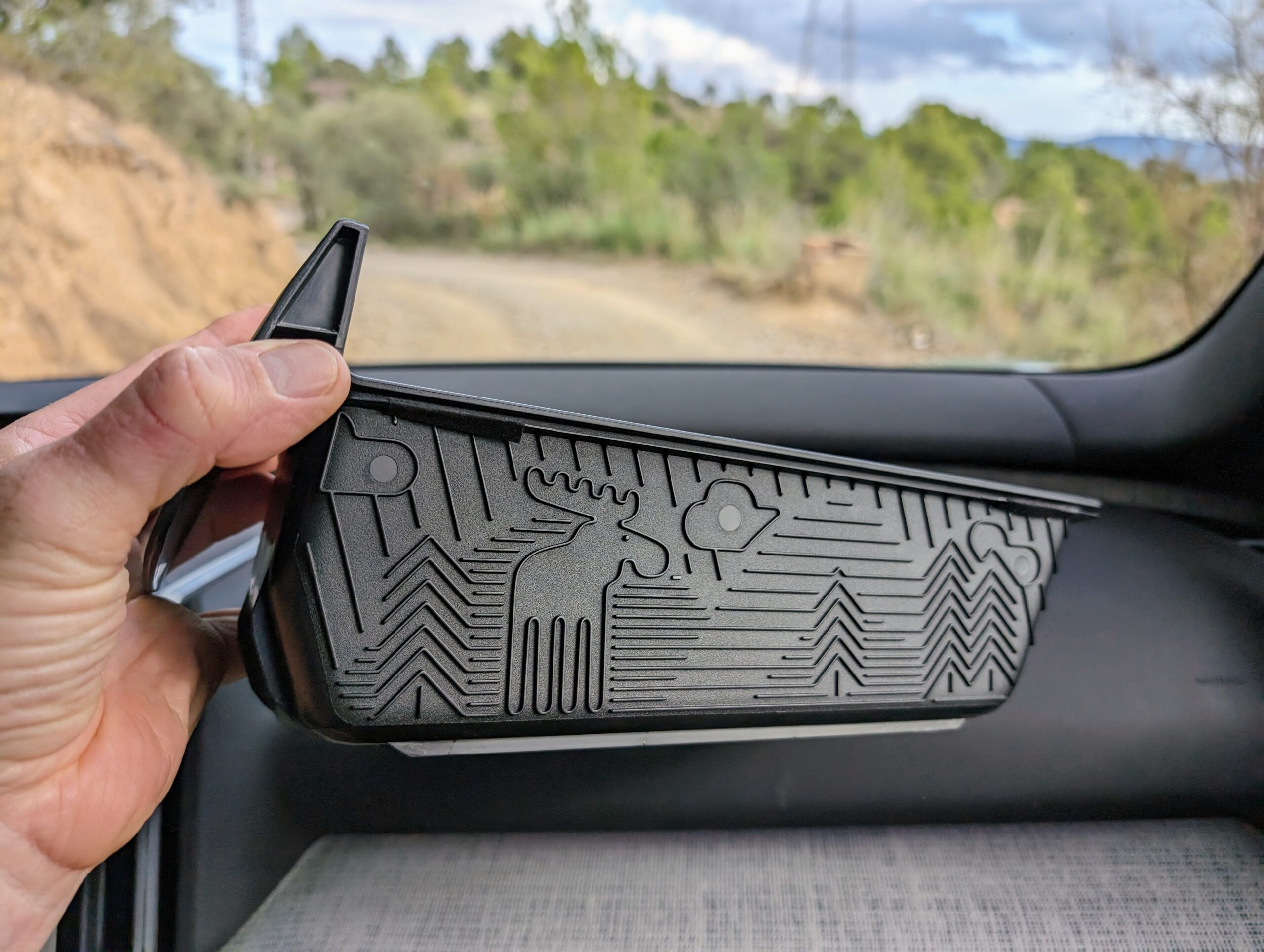
The small removable cubby at the rear of the center console was decorated with a playful Scandinavian scene that also provides structural reinforcement. Image credit: Kyle Field, CleanTechnica
The stippled plastic covering the lower portion of the dashboard uses recycled vinyl window frames that have been minced up into tiny bits. Lisa said that Volvo intentionally left the stippled texture on the surface of the plastic as a reminder of its recycled origins and as a way to pay homage to the parts it came from. Living responsibly and sustainably has to be an intentional decision, and Volvo isn’t just talking about this concept; they’re living it from top to bottom and from the inside to the outside of the EX30.
The seats are similarly well thought out with Volvo’s own nordico leatherette that is made from a special blend of recycled polymers and pine sap. This provides a durable synthetic material instead of the use of animal hides. For the seat backing, an array of materials ranging from recycled PET bottles, wool fabrics, and other natural fabrics were used in the various trims to provide the durable, sustainable experience Volvo was looking for.
The doors were designed to be as functional as possible, but also as simple as possible to eliminate the need for unnecessary materials. Volvo moved the window controls into the center console and eliminated the speakers from the doors. This makes for a simplified door design and allowed Volvo’s interior designers to push the usable interior space out into the door space, opening up the cabin of Volvo’s smallest SUV today.
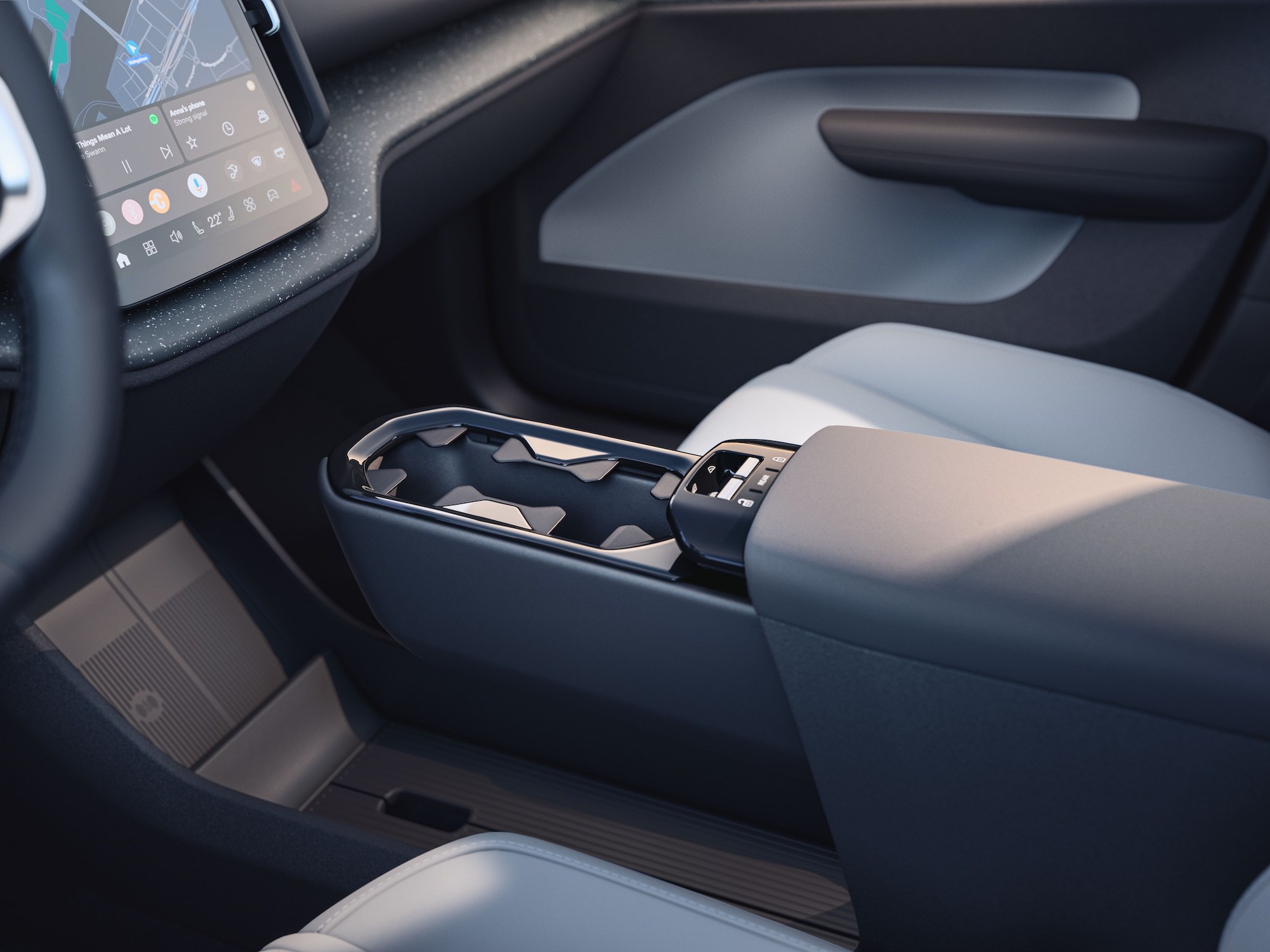
Window controls in the EX30 were moved from the doors into the center console. Image courtesy: Volvo
From a driver and passenger experience, the doors are anchored by floating armrests that stick out into the cabin just enough to be in the right position. They are solid and secure, providing a fantastic area to grip onto when taking tight turns in Volvo’s dual-motor 400-plus horsepower performance build of the EX30.
Replacing the in-door speakers with spatial audio from the soundbar and eliminating the window controls from the door let Volvo eliminate some additional wiring. This concept of minimalist Scandinavian design can be found in just about every aspect of the vehicle.
Overall
With the EX30 entering series production, Volvo has delivered the quality and safety its brand was built on in a compact, efficient, zero emission vehicle at a price point that’s simply unprecedented. It’s the perfect vehicle for small families looking for an affordable car for around town and the daily commute. It’s also well suited for single drivers and empty nesters. It’s actually harder to think of applications where the EX30 doesn’t do well in, than places where it shines. As a compact SUV, don’t expect it to haul 7 people or a house full of furniture, but that’s obvious. If you need that, get a truck or an EX90.
It performed well in town, out on long curvy country roads, on the highway, and on the byways weaving through the Spanish vineyards. The rear-wheel drive had plenty of pep to it, but if you’re really looking for a thrill or are looking for extra traction in the snow or rain, the AWD build might be a better option. At under $50k fully loaded, the AWD build is hard to beat. If you want to get muddy, either of these is more than up to the task, though it might be worth waiting for the Cross Country build that Volvo should be rolling out in 2024.
For more information about the Volvo EX30 or to reserve one for yourself, head over to its online home on Volvo’s site.
Disclaimer: Volvo paid for the author’s travel and accommodations to attend this event.
Have a tip for CleanTechnica? Want to advertise? Want to suggest a guest for our CleanTech Talk podcast? Contact us here.
EV Obsession Daily!
I don’t like paywalls. You don’t like paywalls. Who likes paywalls? Here at CleanTechnica, we implemented a limited paywall for a while, but it always felt wrong — and it was always tough to decide what we should put behind there. In theory, your most exclusive and best content goes behind a paywall. But then fewer people read it!! So, we’ve decided to completely nix paywalls here at CleanTechnica. But…
Thank you!
Community Solar Benefits & Growth
CleanTechnica uses affiliate links. See our policy here.


